Last updated on
Discover the innovative world of pre-rinse kitchen faucets, designed to make your dishwashing experience more efficient and enjoyable.
Picture this: you’ve just finished cooking a delicious meal and now it’s time to tackle the dreaded clean-up. You turn on your kitchen faucet, but it’s not powerful enough to get rid of all the food particles on your dishes.
That’s where a pre-rinse kitchen faucet comes in handy! But what exactly is a pre-rinse kitchen faucet? In this article, we’ll dive deep into what makes these faucets unique and why they’re becoming increasingly popular among homeowners. So if you’re looking for an easier way to clean up after meals, keep reading!
What's Inside
Origins and History
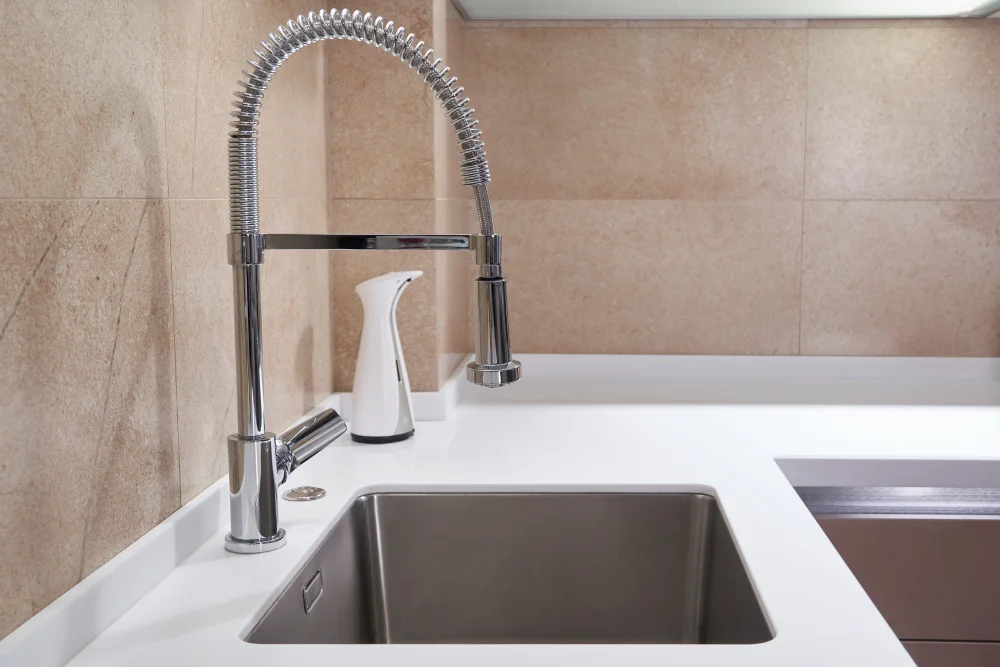
The first pre-rinse faucet was invented in the early 1900s by a man named William Haskell. He designed it to be used in commercial kitchens, where efficiency is key.
The original pre-rinse faucet had a simple structure that consisted of two valves and an overhead spray nozzle.
Over time, the design of pre-rinse faucets became more complex as manufacturers added new features to improve functionality and convenience. Today’s models come with various options such as pull-down sprayers, adjustable water pressure settings, touchless sensors for hands-free operation, and even LED lights that change color based on water temperature.
Design and Structure
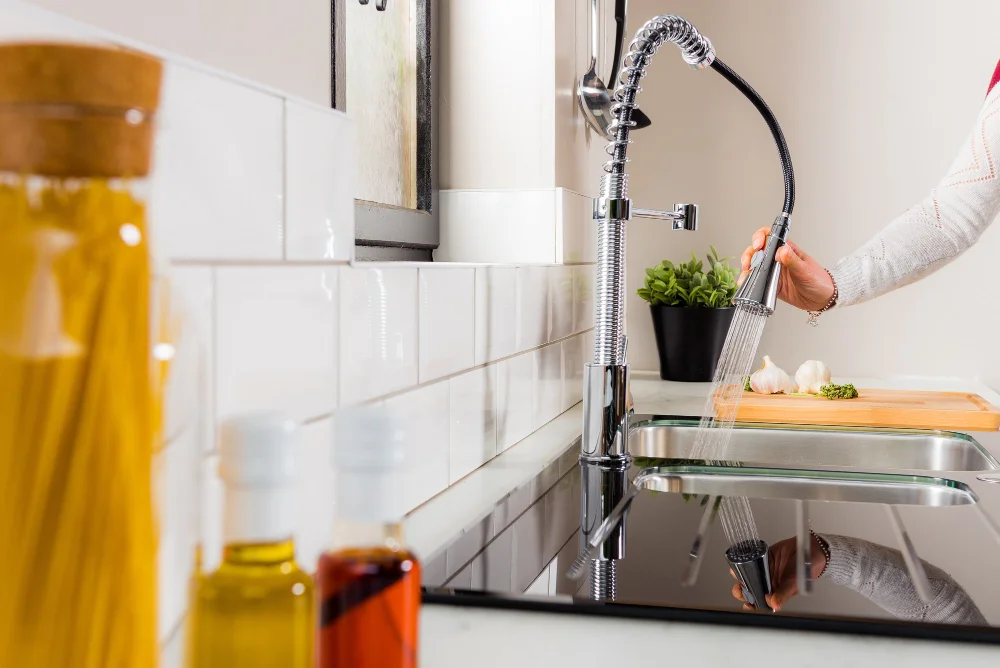
They typically have a tall, flexible hose that can be pulled down or extended to reach all corners of the sink. The faucet head is usually larger than traditional kitchen faucets, with a powerful spray function that helps remove stubborn food particles from dishes.
The structure of pre-rinse kitchen faucets is also unique. Most models feature a heavy-duty spring coiled around the hose for added support and flexibility.
This allows you to easily move the faucet head around your sink without it sagging or losing its shape over time.
In terms of materials, pre-rinse kitchen faucets are often made from high-quality stainless steel or brass for durability and longevity. Some models may also include additional features such as ceramic disc valves for improved water flow control.
Functionality and Benefits
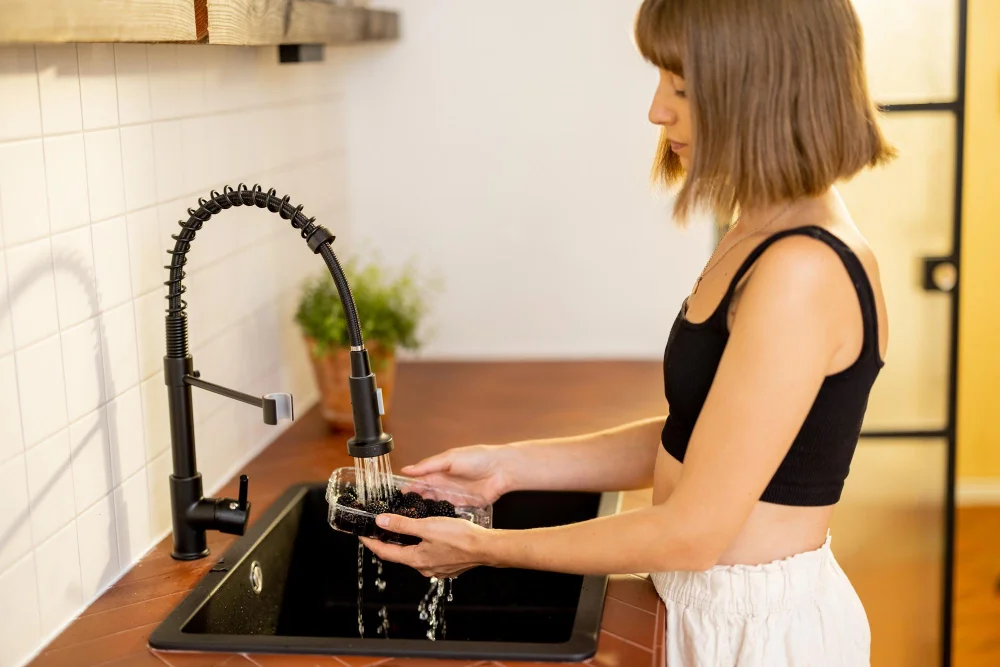
They come with a powerful spray head that can blast away even the toughest food particles from your dishes. This means you’ll spend less time scrubbing and soaking your dishes in the sink.
Another benefit of pre-rinse kitchen faucets is their flexibility. The long hose allows you to reach every corner of your sink, making it easy to clean large pots and pans or fill up buckets for cleaning purposes.
In addition to their functionality, pre-rinse kitchen faucets also add a touch of style to any modern kitchen design. With sleek finishes like chrome or stainless steel, they’re sure to complement any decor scheme.
Types of Pre Rinse Faucets
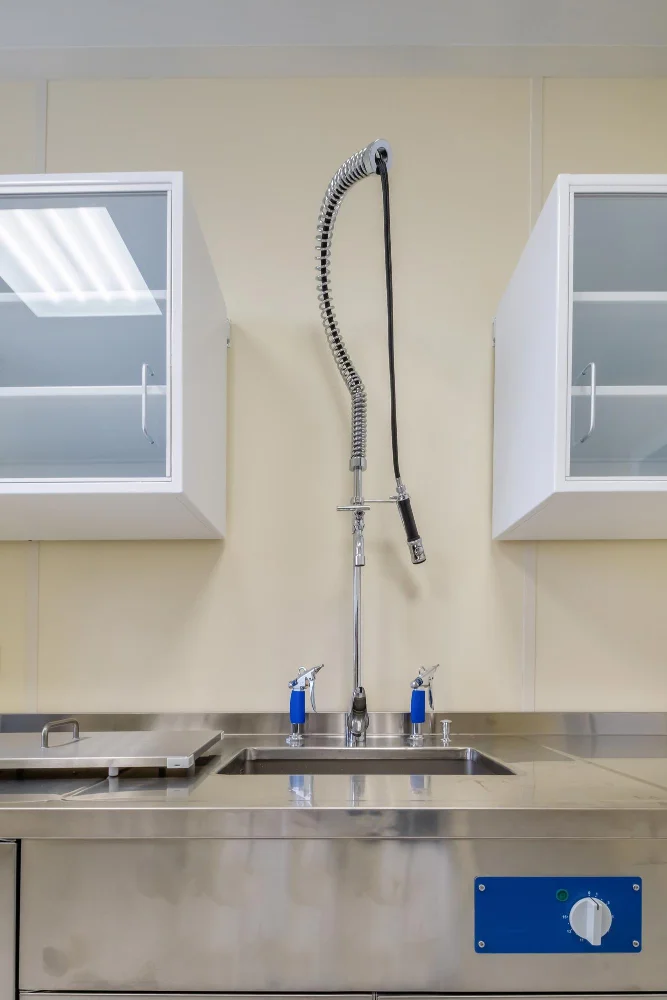
The most common type is the wall-mounted pre-rinse faucet, which is installed directly onto the wall above your sink. This type of faucet typically has a long hose that can be pulled down and used to rinse dishes or fill pots with water.
Another popular option is the deck-mounted pre-rinse faucet, which sits on top of your countertop and requires a hole to be drilled for installation. This type of faucet also features a flexible hose that can be maneuvered around your sink area.
In addition to these two main types, there are also commercial-grade pre-rinse faucets designed for heavy-duty use in restaurants or other food service settings. These models often have more advanced features such as high-pressure sprayers and multiple spray patterns.
No matter what type you choose, a pre-rinse kitchen faucet can make cleaning up after meals much easier and more efficient than traditional faucets.
Features of Pre-Rinse Kitchen Faucets
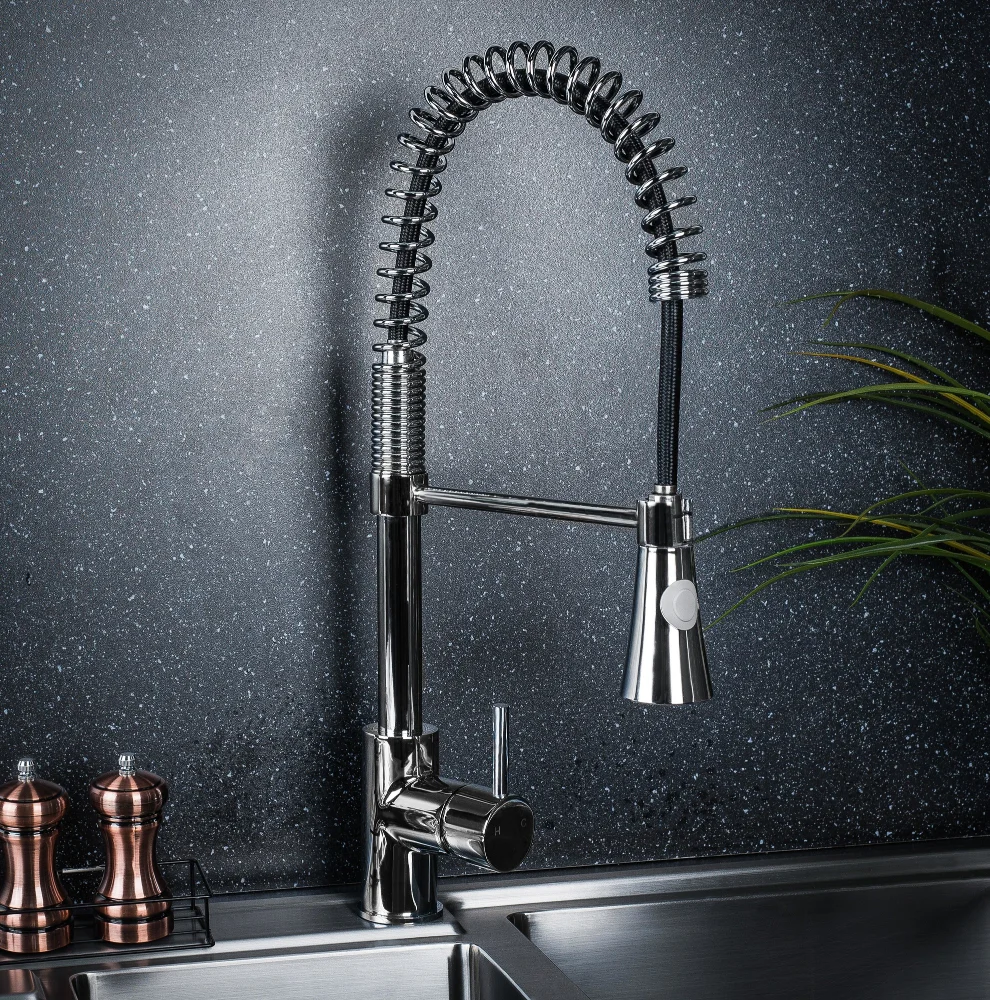
They come with a variety of features that enhance their functionality, making them an excellent addition to any modern kitchen. One of the most notable features is the high-pressure spray nozzle, which allows you to blast away stubborn food particles from your dishes quickly.
Another feature is the flexible hose that can be maneuvered in different directions for maximum convenience. This makes it easy for you to reach all corners of your sink and clean even large pots and pans without having to move them around.
Some pre-rinse faucets also come with built-in soap dispensers or sprayers, allowing you to apply soap directly onto your dishes before rinsing them off. Some models have adjustable water flow settings so that you can control how much water comes out at once.
Style Types
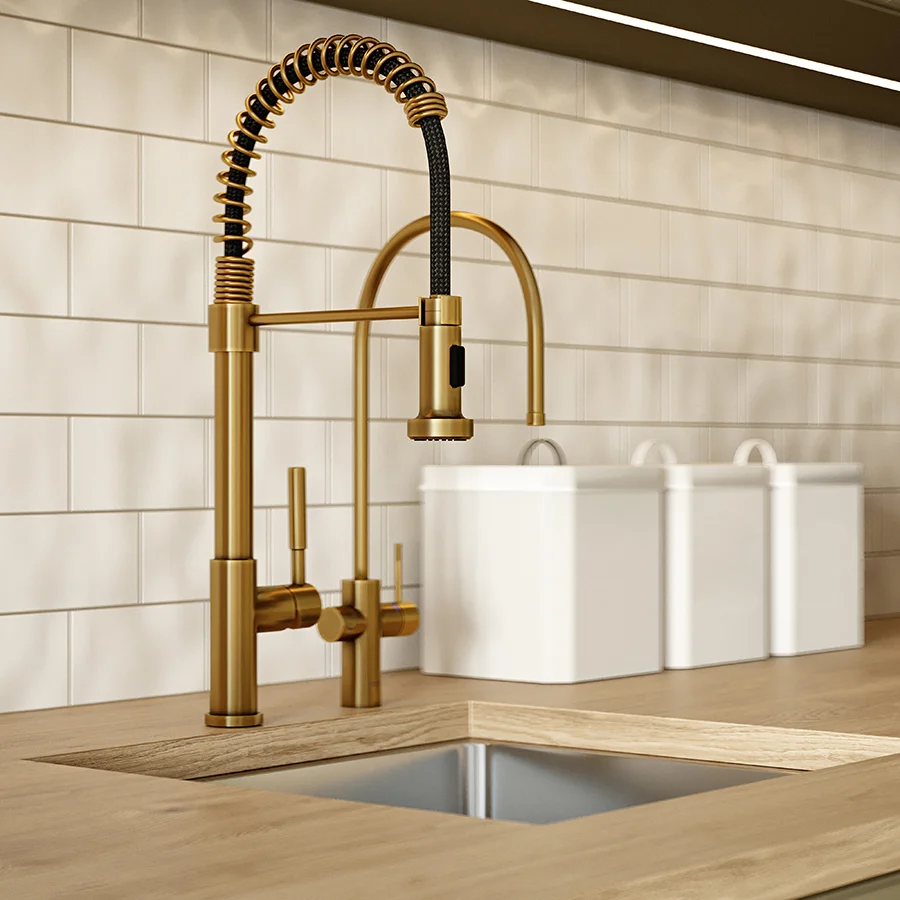
The most popular style is the commercial-style faucet, which features a high-arc spout and a flexible hose that can be pulled down for easy cleaning. This style is perfect for those who want an industrial look in their home kitchens.
Another popular style is the contemporary pre-rinse faucet, which has sleek lines and modern finishes like chrome or stainless steel. These faucets are ideal for homeowners who prefer minimalist designs with clean edges.
For those looking to add some vintage charm to their kitchens, there are also traditional pre-rinse faucets available with ornate details and antique finishes like oil-rubbed bronze or brushed nickel.
Built-In Features

Some models have adjustable spray patterns, allowing you to switch between different water pressures and flow rates depending on the task at hand. Others have pull-down sprayers that extend beyond the sink basin, making it easier to reach every corner of your dishes.
Some pre-rinse faucets also come with additional features such as soap dispensers or touchless sensors for hands-free operation. These features not only add convenience but also help keep your kitchen clean and hygienic.
When choosing a pre-rinse faucet, consider which built-in features are most important to you based on your specific needs and preferences in the kitchen.
Optional Features
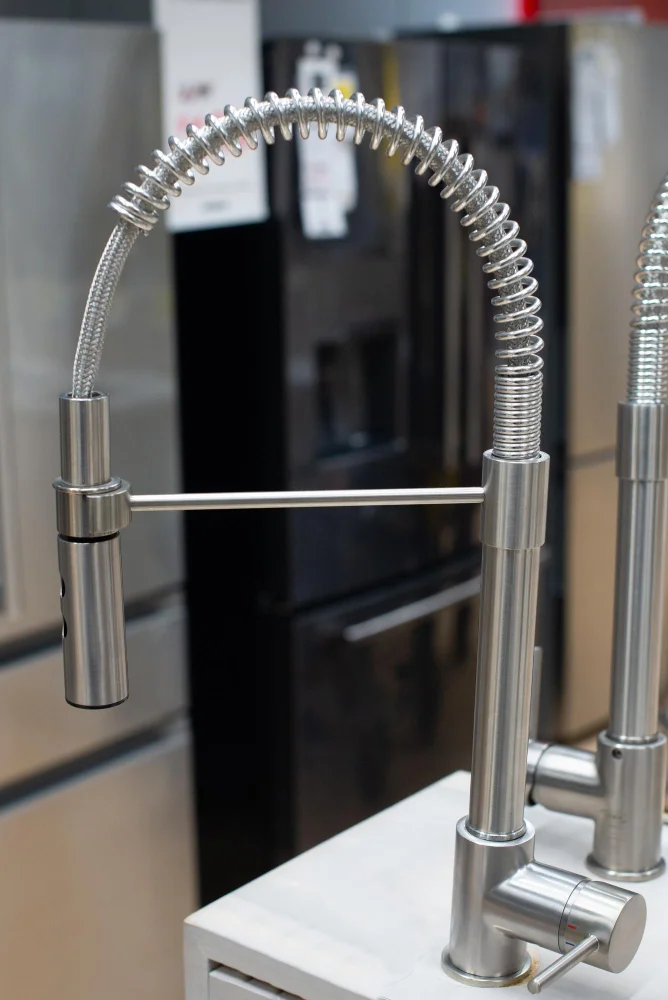
Some models have adjustable water pressure and flow rate settings, allowing you to customize the strength of the spray depending on what you’re washing. Others have built-in soap dispensers or sprayers for added convenience.
Another popular optional feature is a pull-down or pull-out sprayer head, which allows you to easily reach all corners of your sink and rinse dishes from different angles. Some models even come with touchless technology that uses motion sensors to turn on and off the faucet without having to touch it.
When choosing a pre-rinse kitchen faucet, consider which optional features would be most useful for your needs and budget.
Environmental Advantages

These faucets are designed to conserve water and energy, making them an eco-friendly choice for your home. With a pre-rinse faucet, you can reduce the amount of water you use during dishwashing by up to 50%.
This is because these faucets come with a powerful spray that can remove food particles without the need for excessive rinsing or scrubbing.
Moreover, many pre-rinse kitchen faucets are equipped with features such as flow restrictors and aerators that help regulate water usage while maintaining optimal pressure. By using less hot water during dishwashing, you’ll also save on energy costs associated with heating it up.
In addition to conserving resources at home, choosing an eco-friendly option like a pre-rinse faucet helps contribute towards global sustainability efforts.
Price Range and Budgeting

On average, you can expect to spend anywhere from $100 to $500 for a high-quality pre-rinse faucet. However, keep in mind that some models may be priced higher due to additional features or materials used in construction.
Before making your purchase decision based solely on price alone though – consider what you need out of your new kitchen fixture. If you’re looking for something basic with no frills attached then there are plenty of affordable options available that will get the job done just fine! But if style and functionality are important factors for you then investing in a more expensive model might be worth considering.
Popular Brands and Models
Some of the most popular brands include Kohler, Delta, Moen, Kraus and Danze. Each brand offers unique features that cater to different needs and preferences.
For example, Kohler’s pre-rinse faucet has a high-arch spout for added clearance when washing large pots or pans. Delta’s model includes Touch-Clean spray holes that allow you to easily wipe away calcium and lime build-up with just your finger.
Moen offers an eco-friendly option with their MotionSense Wave technology which allows you to turn on/off the water flow without touching anything – perfect for those who want a more hygienic experience in their kitchen.
Kraus’ commercial-style faucet is designed with heavy-duty materials such as solid brass construction ensuring durability over time while Danze provides an affordable yet stylish option suitable for any budget-conscious homeowner looking for quality performance at reasonable prices.
Installation Process

While it may seem daunting at first, installing a pre-rinse kitchen faucet can be done in just a few simple steps. First and foremost, make sure that you have all the necessary tools and materials on hand before beginning the installation process.
The most important tool you’ll need is an adjustable wrench to tighten all of the connections securely. You’ll also need plumber’s tape or thread sealant to ensure that there are no leaks once everything is connected.
Before starting any work on your sink area, turn off both hot and cold water supply valves under your sink. Next up will be removing any existing faucets or fixtures from their mounting holes in order for new ones to fit properly.
After this step has been completed successfully without causing damage (if applicable), install brackets onto which hoses will attach later during final assembly stages; these brackets should come included with most models sold today but double-checking never hurts!
DIY Vs. Professional Installation

While DIY installation may seem like an attractive option for those who are handy with tools and have some plumbing experience, it’s important to consider the potential risks involved.
One of the biggest advantages of hiring a professional plumber is that they have years of experience and training in installing all types of faucets. They know how to properly connect water lines, install mounting hardware securely, and ensure that everything is working correctly before leaving your home.
On the other hand, if you decide to tackle this project on your own without any prior knowledge or expertise in plumbing work – there’s always room for error. You could end up damaging pipes or causing leaks which can lead not only costly repairs but also damage your property.
Materials and Tools You Need
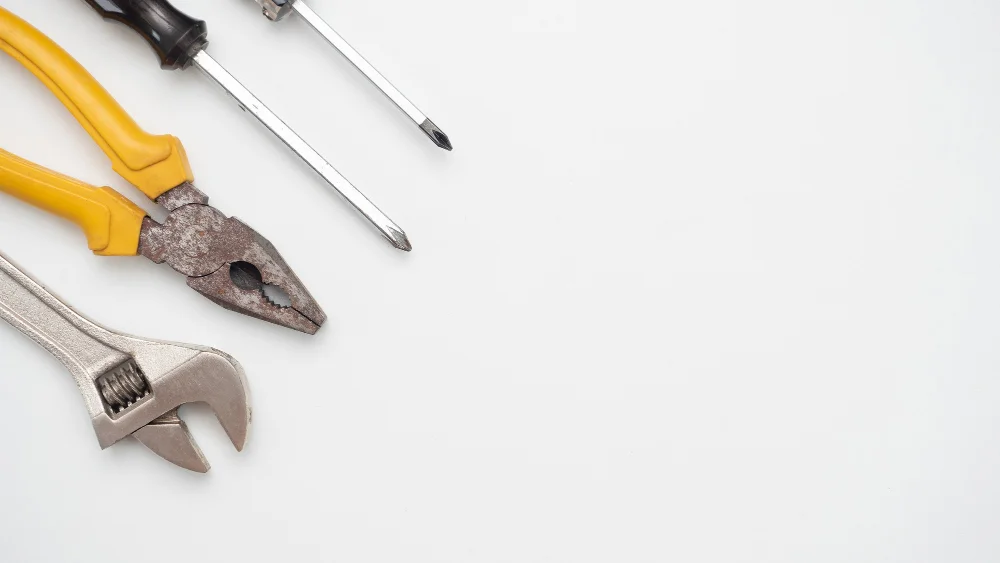
The good news is that most of these items are readily available at your local hardware store or online retailer. Here’s what you’ll need:
Materials:
- Pre-rinse kitchen faucet
- Mounting hardware (included with the faucet)
- Plumbers putty or silicone sealant
- Teflon tape
Tools:
- Adjustable wrenches (two sizes)
- Basin wrench
- Screwdriver (flathead and Phillips head)
- Before starting the installation process, make sure to read through the manufacturer’s instructions carefully. Some faucets may require additional tools or materials depending on their specific design.
Maintenance and Care
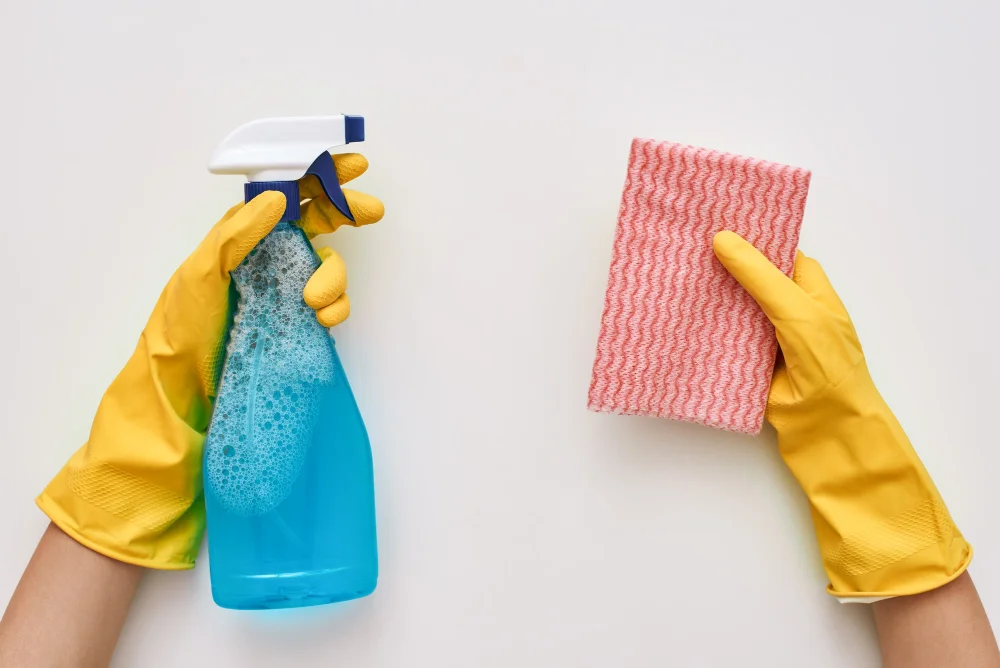
Fortunately, maintenance is relatively easy and straightforward.
Firstly, make sure to clean the faucet regularly with a soft cloth or sponge and mild soap. Avoid using abrasive cleaners or harsh chemicals that can damage the finish.
Secondly, check for any leaks or drips periodically by turning on the water supply valves under your sink. If you notice any issues with water flow or pressure, inspect all connections for loose fittings that may need tightening.
Thirdly, keep an eye out for mineral buildup caused by hard water in areas such as spray nozzles and aerators. To remove this buildup easily without damaging your faucet’s finish use vinegar solution (1 part vinegar: 1 part warm water) soak overnight then rinse thoroughly in cold running tap-water before reassembling back into place.
Cleaning Tips

Here are some tips to help you do just that:
1. Clean the spray head regularly: The spray head is the most used part of your pre-rinse faucet, so make sure to clean it at least once a week with warm water and soap.
2. Use vinegar for hard water stains: If your area has hard water, mineral buildup can cause unsightly stains on your faucet over time.
To remove these stains, soak a cloth in white vinegar and wrap it around the affected area for an hour or two.
3. Don’t use abrasive cleaners: Avoid using harsh chemicals or abrasive sponges when cleaning your pre-rinse kitchen faucet as they can scratch its surface.
4. Wipe down after each use: After every use of the sink, wipe down any excess moisture from around the base of the fixture with a dry towel or rag.
Potential Issues and Solutions

One common problem is leaks, which can be caused by loose connections or worn-out washers. If you notice water dripping from your faucet even when it’s turned off, it’s time to check for leaks and tighten any loose parts.
Another issue that homeowners may encounter is low water pressure. This could be due to a clogged aerator or debris buildup in the spray valve.
To fix this problem, simply remove the aerator and clean out any dirt or sediment that has accumulated inside.
Some users have reported difficulty switching between different spray modes on their pre-rinse kitchen faucets. This could be due to a faulty diverter valve or mineral buildup in the sprayer head.
In such cases, replacing the diverter valve or soaking the sprayer head in vinegar overnight should do the trick.
FAQ
What are the benefits of a pre-rinse faucet?
The benefits of a pre-rinse faucet include its ability to blast off food residue with high water pressure, making cleaning easier, and its tall height, which is ideal for filling large pots and pans.
What does a pre-rinse kitchen faucet mean?
A pre-rinse kitchen faucet refers to a specialized spray valve designed for commercial and institutional kitchens to remove food waste from dishes before dishwashing, saving energy and water costs.
What is the difference between a prep faucet and a kitchen faucet?
The difference between a prep faucet and a kitchen faucet is that a prep faucet, also known as a bar faucet, is smaller and compact, typically used for small tasks like washing fruits, vegetables, or cleaning ingredients before cooking, while a kitchen faucet serves as the main sink faucet.
What is the difference between pull out and pull down faucets?
The difference between pull out and pull down faucets is that pull-down faucets have a spray wand as an extension of the faucet which can be pulled down, while pull-out faucets require pulling out the spray wand, which can be part of the faucet or mounted separately.
How do you install a pre-rinse kitchen faucet in your home?
To install a pre-rinse kitchen faucet in your home, first, shut off the water supply, then remove the old faucet, assemble the new faucet following the manufacturer’s instructions, and secure it properly in place before reconnecting the water supply and testing for leaks.
Can a pre-rinse faucet be used for residential kitchens or is it solely for commercial use?
Although primarily designed for commercial purposes, a pre-rinse faucet can also be utilized in residential kitchens.
What factors should be considered when choosing a pre-rinse kitchen faucet for your needs?
When choosing a pre-rinse kitchen faucet, consider factors such as water pressure, spray valve flow rate, swivel arm range, material, ease of installation, and pricing.





